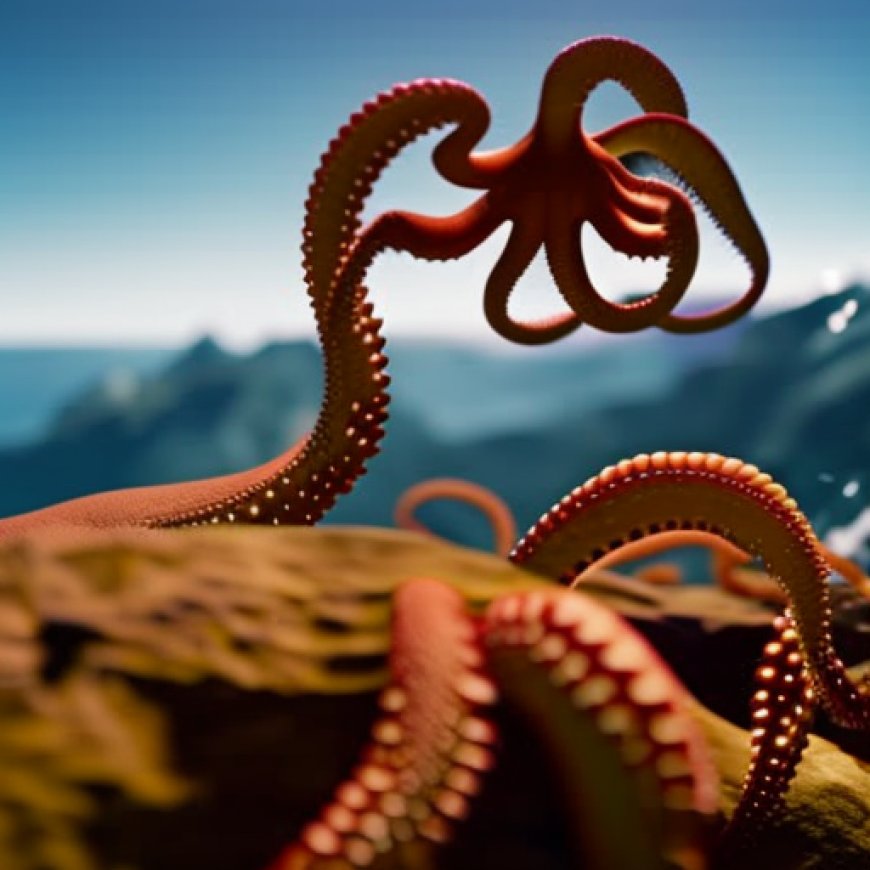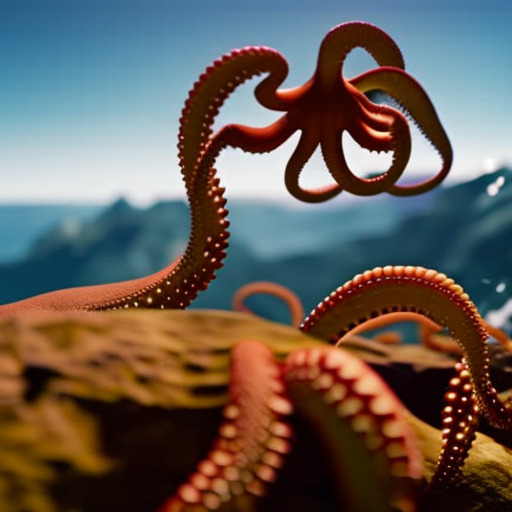Octopus moving along underwater mountain off the coast of Chile
Octopus moving along underwate [IMAGE] EurekAlert


Exploring Uncharted Seamounts in Chilean Waters
Introduction
The Schmidt Ocean Institute recently conducted an exploration transect on an unexplored and unnamed seamount located within the national jurisdiction of Chile. This seamount is situated east of Motu Motiro Hiva, an uninhabited island along the Salas y Gómez Ridge. The dive, known as Dive 674, started at a depth of approximately 800 meters and traveled upslope to around 270 meters. This article highlights the findings of this expedition and the significance of sustainable development goals in marine conservation.
Exploration Findings
During Dive 674, the research team documented various marine species, including an octopus. This discovery showcases the rich biodiversity present in the unexplored seamounts of Chilean waters. The exploration transect provided valuable insights into the ecological characteristics and habitats of these underwater mountains.
Sustainable Development Goals (SDGs)
The exploration of uncharted seamounts aligns with several Sustainable Development Goals (SDGs) set by the United Nations. These goals include:
- Goal 14: Life Below Water – By exploring and understanding marine ecosystems, we can contribute to the conservation and sustainable use of oceans, seas, and marine resources.
- Goal 15: Life on Land – The exploration of seamounts helps in understanding the interconnectedness of terrestrial and marine ecosystems, promoting biodiversity conservation on both land and sea.
- Goal 17: Partnerships for the Goals – The collaboration between the Schmidt Ocean Institute and Chilean authorities exemplifies the importance of partnerships in achieving sustainable development objectives.
Conclusion
The exploration of uncharted seamounts in Chilean waters provides valuable insights into marine biodiversity and ecosystem dynamics. By aligning with the Sustainable Development Goals, such expeditions contribute to the conservation and sustainable use of marine resources. The partnership between research institutions and authorities plays a crucial role in achieving these goals. Continued exploration and conservation efforts are essential to ensure the long-term health and resilience of our oceans.
SDGs, Targets, and Indicators
1. SDGs addressed or connected to the issues highlighted in the article:
- SDG 14: Life Below Water – The article discusses the exploration of an unexplored seamount and highlights the importance of understanding marine ecosystems.
- SDG 15: Life on Land – The article mentions the location of an uninhabited island and the exploration of its surrounding marine environment.
2. Specific targets under those SDGs based on the article’s content:
- SDG 14.2: By 2020, sustainably manage and protect marine and coastal ecosystems to avoid significant adverse impacts, including by strengthening their resilience, and take action for their restoration in order to achieve healthy and productive oceans.
- SDG 15.5: Take urgent and significant action to reduce the degradation of natural habitats, halt the loss of biodiversity, and protect and prevent the extinction of threatened species.
3. Indicators mentioned or implied in the article to measure progress towards the identified targets:
- Indicator for SDG 14.2: Percentage of marine areas protected or conserved.
- Indicator for SDG 15.5: Extent of protected areas for marine ecosystems.
Table: SDGs, Targets, and Indicators
| SDGs | Targets | Indicators |
|---|---|---|
| SDG 14: Life Below Water | 14.2: By 2020, sustainably manage and protect marine and coastal ecosystems to avoid significant adverse impacts, including by strengthening their resilience, and take action for their restoration in order to achieve healthy and productive oceans. | Percentage of marine areas protected or conserved. |
| SDG 15: Life on Land | 15.5: Take urgent and significant action to reduce the degradation of natural habitats, halt the loss of biodiversity, and protect and prevent the extinction of threatened species. | Extent of protected areas for marine ecosystems. |
Behold! This splendid article springs forth from the wellspring of knowledge, shaped by a wondrous proprietary AI technology that delved into a vast ocean of data, illuminating the path towards the Sustainable Development Goals. Remember that all rights are reserved by SDG Investors LLC, empowering us to champion progress together.
Source: eurekalert.org

Join us, as fellow seekers of change, on a transformative journey at https://sdgtalks.ai/welcome, where you can become a member and actively contribute to shaping a brighter future.







